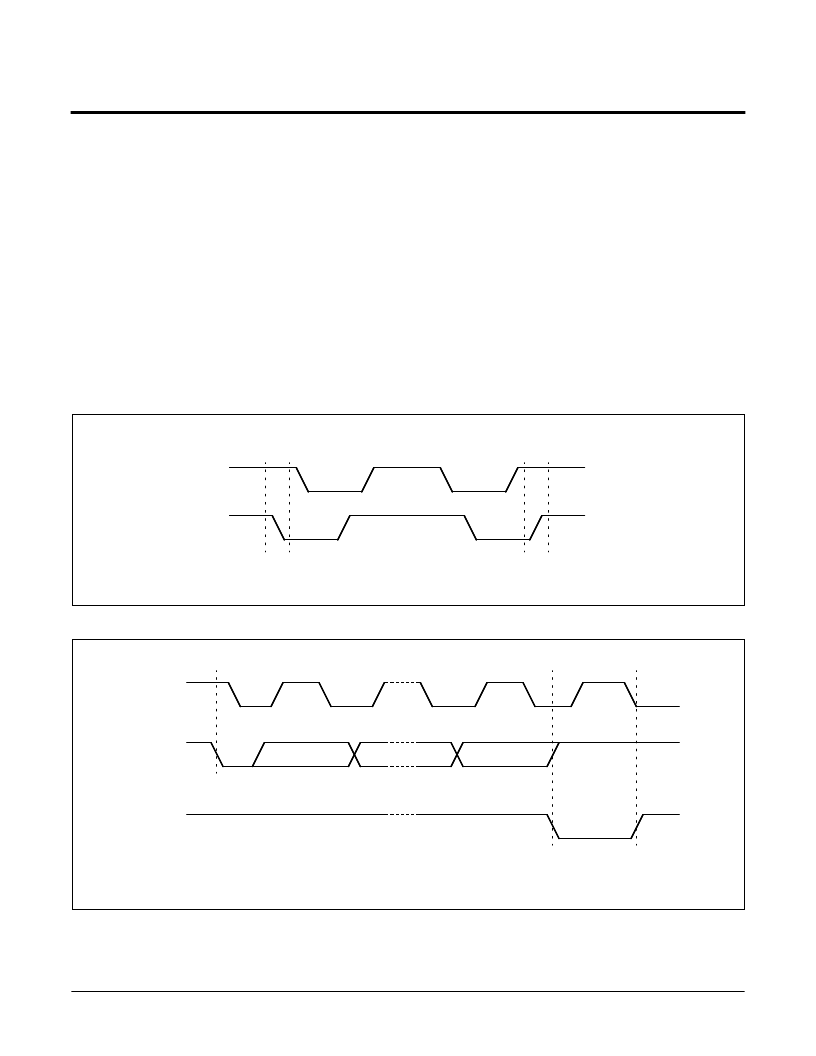- 您現在的位置:買賣IC網 > PDF目錄371197 > X24026X-2.7 Serial E2PROM PDF資料下載
參數資料
| 型號: | X24026X-2.7 |
| 英文描述: | Serial E2PROM |
| 中文描述: | 串行E2PROM |
| 文件頁數: | 4/15頁 |
| 文件大小: | 64K |
| 代理商: | X24026X-2.7 |

X24026
4
Stop Condition
All communications must be terminated by a stop condi-
tion, which is a LOW to HIGH transition of SDA when
SCL is HIGH. The stop condition is also used by the
X24026 to place the device in the standby power mode
after a read sequence. A stop condition can only be
issued after the transmitting device has released the bus.
Acknowledge
Acknowledge is a software convention used to indicate
successful data transfer. The transmitting device, either
master or slave, will release the bus after transmitting
eight bits. During the ninth clock cycle the receiver will
pull the SDA line LOW to acknowledge that it received
the eight bits of data. Refer to Figure 3.
The X24026 will respond with an acknowledge after rec-
ognition of a start condition and its slave address. If both
the device and a write operation have been selected, the
X24026 will respond with an acknowledge after the
receipt of each subsequent eight bit word.
In the read mode the X24026 will transmit eight bits of
data, release the SDA line and monitor the line for an
acknowledge. If an acknowledge is detected and no stop
condition is generated by the master, the X24026 will
continue to transmit data. If an acknowledge is not
detected, the X24026 will terminate further data trans-
missions. The master must then issue a stop condition to
return the X24026 to the standby power mode and place
the device into a known state.
Figure 2. Definition of Start and Stop
Figure 3. Acknowledge Response from Receiver
SCL
SDA
START BIT
STOP BIT
7020 FRM 04
7020 FRM 05
SCL FROM
MASTER
DATA
OUTPUT
FROM
TRANSMITTER
1
8
9
DATA
OUTPUT
FROM
RECEIVER
START
ACKNOWLEDGE
相關PDF資料 |
PDF描述 |
|---|---|
| X24026 | IC CTRL/REG SYNC BUCK 24-MLPQ |
| X24026X | IC CTRL/REG SYNC BUCK 24-TSSOP |
| X24026Y | Controller IC; Package/Case:24-MLPQ; Supply Voltage Max:28V; Controller Type, IC:Buck; Features:Synchronous Buck, Voltage Mode, Dual PWM, High Performance; Leaded Process Compatible:Yes; Number of PWM Channels:2 |
| X24026H | Serial E2PROM |
| X24026W | Serial E2PROM |
相關代理商/技術參數 |
參數描述 |
|---|---|
| X24026Y | 制造商:XICOR 制造商全稱:Xicor Inc. 功能描述:Serial E2PROM |
| X24026Y-2.7 | 制造商:ICMIC 制造商全稱:IC MICROSYSTEMS 功能描述:Serial E2PROM |
| X2402DI | 制造商:未知廠家 制造商全稱:未知廠家 功能描述:Serial EEPROM |
| X2402I | 制造商:XICOR 制造商全稱:Xicor Inc. 功能描述:Electrically Erasable PROM |
| X2402P | 制造商:未知廠家 制造商全稱:未知廠家 功能描述:Serial EEPROM |
發(fā)布緊急采購,3分鐘左右您將得到回復。